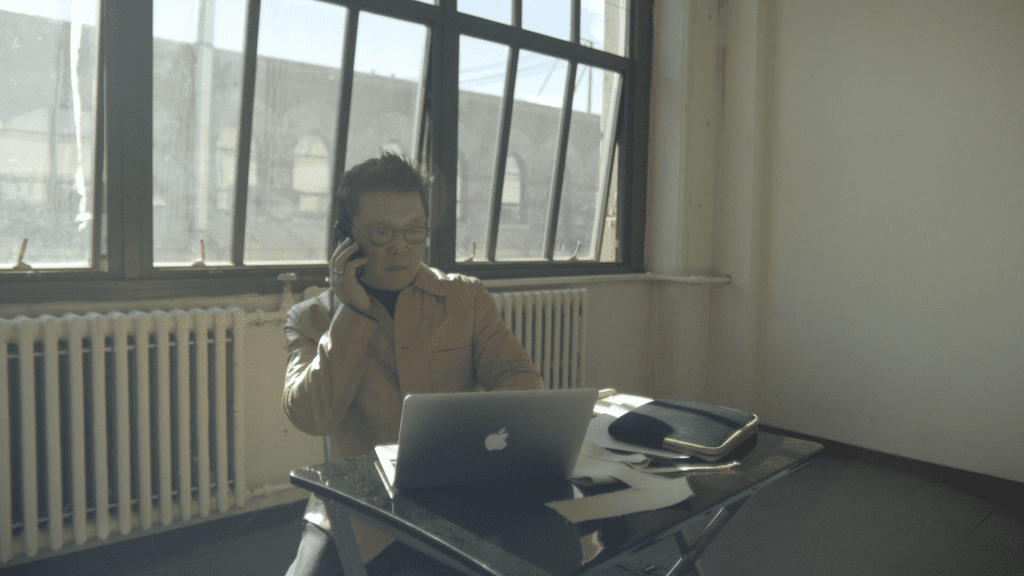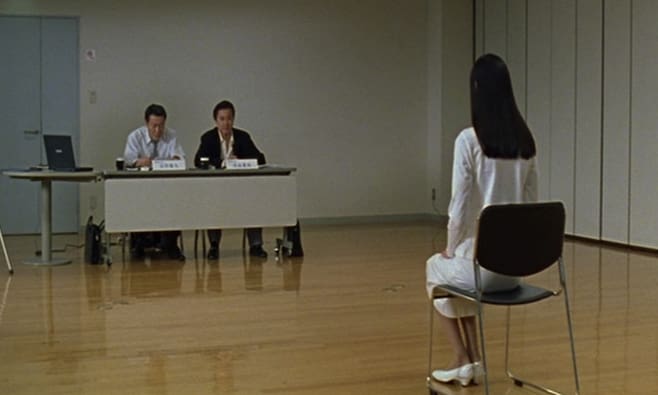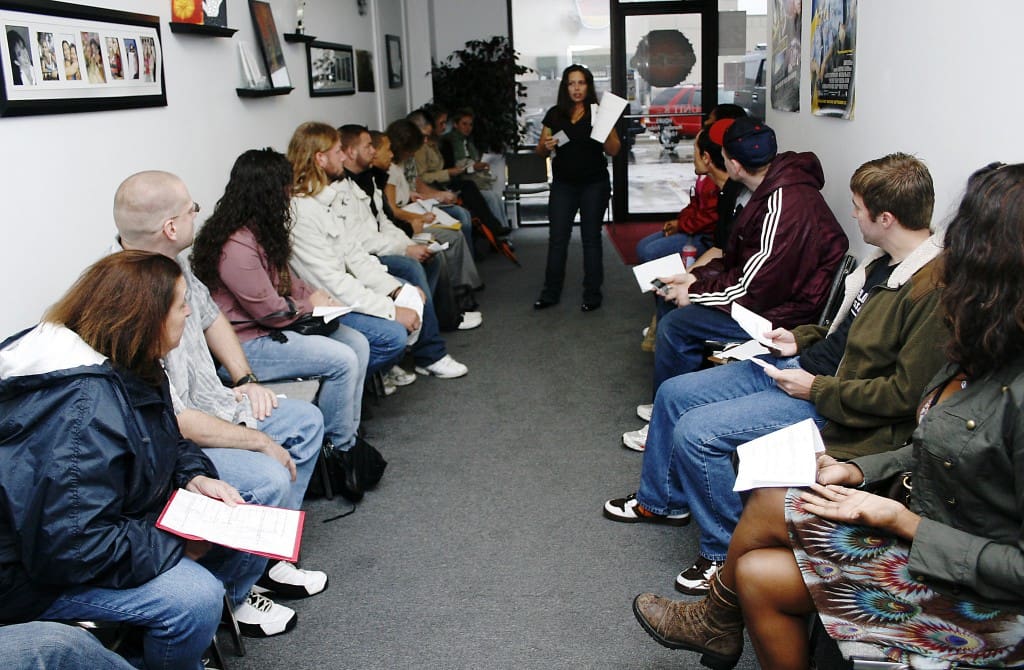Elia Kazan once famously said that “casting the right actors accounted for 90% of a movie’s ultimate success or failure”. While there have been giant leaps in technology for films since this quote, it still rings true today.
Who is in your film can make it or break it.
I just finished casting for my latest short film Memorama. Along the way, I was able to develop a rock solid system for getting the most out of this process. Since I was working on a self financed film, we can certainly consider this a process for ‘low budget’ films, although ‘low budget’ might be embellishing a little.
The Goal
The goal of any casting is NOT to find the perfect actor or actress. That may work for big budget productions (maybe), but as an independent film, your choices are limited by your budget, and, if you have one, your industry reputation.
It also is hard to know if someone is perfect for a role. You can certainly believe, project, and hope, but until you complete the moive you can never be sure.
So instead, we need to realize that the goal here is to see as many of the most qualified thespians out there in our target range for each role. You may to need to work this process multiple times to fill a certain role, but the process does work to accomplish our goal.
Step 1: Build Credibility
Looking at it from an actor’s perspective, you can understand why the better thespians would want to ‘vet’ the productions they try out for. No one wants to waste their time, just like you don’t want anyone to waste yours.
If you are like me, you are a trying to build a reputation, not living off one. So in order to get the best cast to audition, you have to build your credibility to make those actors feel more comfortable about your production.
I have a pretty solid portfolio of work to establish my credibility, however, that is not always enough. So what I did for this casting, after discussing it with my AD, was to become a SAG-AFTRA signatory. SAG-AFTRA is the acting union(s) that recently merged. They offer a great variety of new contracts for independent productions.
Since I am shooting a short film that will be released via internet primarily, I went with the New Media contract. SAG-AFTRA is a great way to get the best possible cast. However, it does come with many regulations and a lot of paperwork. That is why actor’s prefer union productions. It takes away the concern for their well being, and they can get a ‘deferred payment’. ‘Deferred pay’ basically means that if the production makes enough money, the actors get compensated at their normal daily rate for the production, as they should.
In order to see the best, you have to provide the best. Going with the union adds some cost for insurance, permits, and other legal docs, but these are items you should have anyway. Think of it this way. The added cost for these expenses, and the additional work, will take away many headaches and open up the doors to the best possible talent.
Step 2: Get a Good Casting Agent or Make One Up
Now that you have some credibility to build off of, the next step is to set up your casting team. It does not have to be a world renowned casting agent. You just need to separate the creative and the organizing.
When I first started casting, I had a typical DIY attitude toward the process. I spoke with the potential actors who responded. I set up the schedule, organized the process, and even greeted everyone as they came. This definitely works about as well as hammering in a nail with your shoe. You may eventually get it in, but it’s not worth the effort.
For this film, I was lucky to team up with an experienced producer / AD. This time, he handled all of the responses, scheduling, organization, and greeting. I handled the actual audition when they arrived. This had two major effects.
First, this separates the creative from the trivial stuff. If you are handling responses, and what not, you are going to develop a perception of each individual. In turn, they are going to develop a perception of you. On top of that, you also have opened up the doorways for contact after the audition. You can expect a lot of desperate emails for months saying, ‘hey, any word on the part?’. By separating the creative, you are able to start fresh at the audition and judge them solely on their abilities.
Second, and more important for your ego, you will feel like a celebrity. By the time the actors had responded, set up their time, found the location, signed in (part of the SAG-AFTRA paperwork), and walked in to the audition, they were excited to meet the director they heard so much about (lil old me).
Having someone else handle the communication end of the audition helped add to my credibility, and allowed me to connect to each actor on a creative level without all the other junk getting in the way. While DIY works, this method is way more effective. After all, presentation is everything.
Step 3: Vetting the Submissions
Welcome to the wonderful age of the internet, where any and all have online identities to scour. I put this to use during the audition process. I think it is extremely important to take the time to look through each submission. Obviously, you look at the photo, but that is a bad way to judge. You can also look at the resume and see if anything stands out.
However, the best way to judge I have found, is in portfolio pieces. I just want to see someone in action, and form an opinion on whether or not they can ‘act’. I’m not forming an opinion on whether they are right for the role. That is almost impossible to judge unless they are in a very similar role in their portfolio. I’m forming an opinion of their abilities. I can spot someone who can’t act in about 10 seconds of a performance. These people, I immediately X off my audition list. In order to make the most of the process, I want to only see the best potential actors. Wasting time with someone who does not have the ability for the role takes away from my time with those who do.
So take the time to sift through the submissions and try to get the most information you can on each potential person. This may take more time in the beginning, but it will save you loads of time later on.
Step 4: What You Need for An Audition
If you are a union film, then you are going to need certain sign in sheets, etc. You need to check your contracts to make sure you have the necessary paperwork to be in compliance.
You are going to need a place for the actor’s to sign in, possibly a desk and chairs. You are also going to need a private room to audition in. You do not want other people coming in, or watching, any auditions as they are happening.
Besides that, it is extremely important to bring a video camera. This can be an ipad, or camera phone at the very least. You need to film the auditions for two reasons.
One, it is important to have the actors slate themselves. I have them say their name and a contact number. This is a great way to make sure you have the right contact info and if you like the audition, that you are contacting back the right actor about the part. I have heard horror stories about people contacting someone to tell them they got the part, only to be shocked when a different person shows up for rehearsals
Two, it is tough to judge an audition until later on. I have heard certain readings I loved, and then changed my opinion after I watched the tape. I think that it is just natural to form an opinion of people when you meet, and this can effect your ability to accurately judge the audition. If you like someone, or they look good for the part, you may think they performed better then they actually did, and vice versa for someone who you didn’t click with right away.
Besides this stuff, I also grab some water, light snacks, and obviously copies of any material needed for the audition. Now that you have all of the things prepared for the audition, let’s map out the actual process once the potential stars arrive.
Step 5: The Audition
There is certainly no perfect way to audition for every role. Some roles are more physical in nature, some require specific skills, and some require great emotional range. Therefore, each audition has to be handled in a custom manner.
The customization lies in what you want the actor to do. Should they read an aside? Prepare a monologue? Read against another thespian? These choices are all going to be dependent on what type of role you are casting for.
Once these decisions are made, then we can use some universal tips good for any audition. Here is how I handle the process.
Tip 1: Tell them the story
Whether you hand out the script when they respond to the audition, or prepare a quick version of the script for each audition, it is important that the persons understands the role they are auditioning for. As an actor, you are constantly applying for roles and sometimes you will pick something that fits your description, but not your personal taste.
You can waste a lot of time auditioning someone only to find out later they are not interested in your story, or they just don’t like it. In my new short film, there is a graphic dream sequence of a sexual nature. While there is no nudity, the scene is meant to be disturbing. That is it’s point in the story.
I made sure I went over all of this with each person before the audition started. The first time, I took the time to explain the script and scene. The second time, I had registered and handed out my script to each person.
I had two people turn down the role off the bat. That may not seem like a lot, but it certainly saved me some time. One girl was completely disgusted by the scene (which I found pretty funny), and the other older gentleman had a young grandson who saw all his films, and would not be able to see this one.
Even if your script has nothing controversial in it, don’t you want to cast someone who is gung ho about the script? I have certainly seen an actor fight to get a role in the competitive spirit, only to wonder what the hell they got into once the production started.
Tell them the story up front. See if they are into it. That is the first key.
Tip 2: What to listen/watch for
So you have your script or aside. The actor comes in. You have gone over the story. They like it, and are ready to give it a shot for the role. They prepare themselves, and take a crack at the script.
What exactly are you listening for? How do you know if they did a good job?
I think this is the most subjective part of the process, so there is no right or wrong answer here. However, there is a method to my madness and I wanted to share it with you.
During the first read, I simply sit back and listen. I can usually tell in 10 seconds if they are a good actor. Now, since I like to research the submissions beforehand, I may already know they can act. However, I still just sit back and listen to their ‘interpretation’ of the material.
What’s important here is NOT to get caught up in this ‘interpretation’. They obviously do not know the material with the same depth you do, so their ‘interpretation’ may be way off. That is ok. What is not ok is if they read it flat because they have not made any interpretation at all.
That is when you know it is time to move on.
After the first read, I now know how they interpret the material and if they can act. For the second read, it’s time to find out if they can take direction. I like to use a scene during an audition that has a lot of character depth, especially if that depth is not exactly written on the page. Let me explain.
For my short, one of the principals is an old man who was a renowned scientist/inventor and after many failures to create a virtual reality machine, now lives like a hermit. In order to save his home from impending foreclosure, he must present his latest mysterious invention to the bank’s vice president, who used to fund his VR machine long ago, and lost a ton of money on it.
The scene I picked for the audition was where he presents the invention. The way the script reads, the presentation monologue can easily be interpreted as a sales job of the invention. 9 out of 10 times, the actors auditioning for the role over exaggerated each line like a mad scientist making his sales pitch to take over the world.
I knew this scene could easily be interpreted this way, but that is not the way it was written, or intended to be. The Old Man does not need to make a sales pitch. His main concern ended once the Vice President showed up at his house. Instead, this monologue is read like a recap of all the things that occurred since the last time they spoke. Instead of selling him on the invention, he is simply catching him up as he prepares to wow him with a demo.
Hopefully, you can understand the difference. One is a sales pitch, putting emphasis on each sentence with a dramatic flair, and the other, is a simply spitting out each line as if you are recalling it from when it actually happened.
So, during each audition, I expected the actors to get the first read wrong. I actually wanted that to happen. That set it up so I could see if they could follow direction.
Before the second read, I gave them this new direction, and explained the ‘proper’ interpretation I was looking for. I was extremely careful not to ‘tell them what I wanted’. Instead, I just told them more about the story, and the character, that was not written on the page. I fed them what can be referred to as ‘acting gold’. Once they understood these new aspects of the character and story, I let them read again.
This is when you can begin to judge the reading. What I am looking and listening for is if they changed their reading. A good actor will take this new information, and read the script whole new way. They may not necessarily nail the read, but you will be able to tell that they listened to your direction and put it to use.
A bad actor will repeat the exact same performance. I am not joking here. I mean, they will repeat the exact same reading, hand movements, etc. I find it amazing each time. I just sat here and described a completely new aspect to the story and character, and they did not even make one adjustment.
If the person repeats the performance, I simply thank them for their time, wrap up the audition, and move on. If they make adjustments, I see how they adjusted, and then try to add a little more direction and have them read a third time.
This process works two ways. First, you can see how well the actor takes direction. Two, you can start to fine tune your directing skills on the actual script. No better way to get comfortable directing the material on the page then actually directing it during the audition. I have used auditions to block scenes, fine tune dialogue, and even learn more about how others interpret my characters. An invaluable experience for when it comes time to shoot.
Tip 3: What Information to Collect
Once you have completed the audition, it is important to verify certain information:
- Gauge their availability for any potential rehearsal and shoot dates.
- Double check their contact info.
- Ask about transportation. Do they have access to a car or do they need public transportation?
- Identify any other potential obstacles for the role, such as wardrobe, hair, physical capabilities, etc. and make sure they are okay with it.
Once all this has been completed, it’s time for the fun part.
Step 6: Picking the Right Cast
Now that you have completed your audition, it’s time to pick the right cast. This is where I put the video to use. I simply take the best reads from each audition. The ones where they took my direction, and I felt they executed it the best.
I put each of those clips back to back in my Premiere Pro timeline. You can use any NLE, or even just watch the clips back to back if you have no access to one. Once I have them all lined up, I watch them and pick out my top 2 or 3.
Sometimes, I only pick out 1. Sometimes I pick none, and repeat the first 5 steps again. It is important to be happy with your selection. If you feel you have not found what your are looking for, do NOT settle. Keep casting.
If you have a few that you like, then I suggest a call back. You can book them if they really nailed it and you know they are perfect, but I still suggest a call back. Experience has taught me their are many parts to a performance, too many to be evaluated during the audition process. While someone may perform one scene perfect, they may fail miserably on another. Having a call back excites that actor, as they know they are a potential fit, and gives you an opportunity to finalize your opinion.
I handle call backs exactly like a regular audition. I just pick a scene that is least like the one from the initial audition, and work from there. The goal is to see their range, and gain confidence in their ability to execute the performance.
Another good trick is if you have other people cast, invite them to the call back to read with the potential actors. This is a great way to judge potential chemistry problems that may occur. Plus, it’s another opportunity to fine tune your directing skills!
Step 7: Reap the benefits
Once you have completed this exhausting casting process, you will be confident in your selections and excited to start executing your vision. Having a good cast is as important to a film as your crew, your post, and everything else. Filmmaking is one giant balancing act, and this is certainly an important piece to the puzzle.
Previous Pre Production Tips:
- To SAG or not to SAG
- How to Location Scout for a Low Budget Shoot
- 9 Essential Steps for Pre-Production
- Casting Tips from the Auditions for Memorama
If you found this content valuable, please follow me on twitter or like us on facebook to receive future updates!





